In interior design, wood is one of the most versatile and impactful materials, capable of transforming spaces with its unique presence. Wood is not just an aesthetic choice; it offers durability, sustainability, and a connection with nature. Understanding wood's different possibilities is essential to creating visually impressive projects that provide a rich and welcoming sensory experience.
In this article, we will delve deeper into the impact of wood in interior design, exploring its importance, the different types of wood, and their applications. We will discuss how this material can be used in iconic furniture pieces and suggest ways to use it in interior design.
Wood, whether in coverings, furniture, or architectural details, has a timeless charm that enhances any project. It is a material that speaks through its natural imperfections, warm tones, and ability to adapt to any decorative style. This timeless quality of wood makes it a smart and sophisticated choice, instilling a sense of confidence in your design decisions.
Wood is more than just a material; it can be a strategy in your interior design projects. Each type of wood reveals a specific story and function, whether it's to create a focal point in a room, add texture to a minimalist space, or provide a sense of continuity between different spaces.
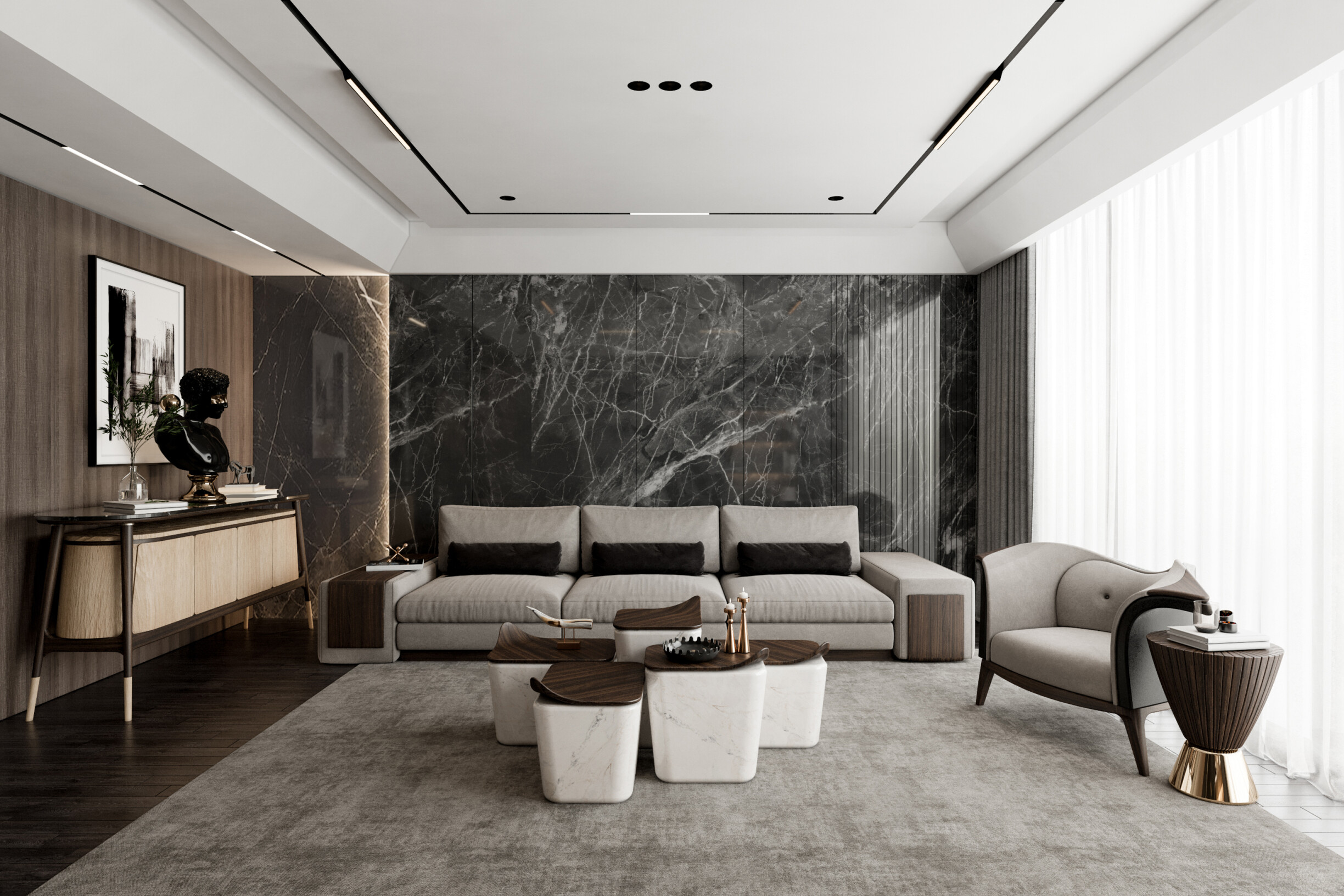
Wood is one of the most valued materials in interior design, whether for its aesthetics or its functional qualities that benefit any space and any project. This material is synonymous with durability, versatility, and comfort, characteristics that make wood a valuable choice:
Durability and sustainability: Wood is a natural and renewable material that can last for decades when well cared for. Woods such as oak or walnut are known for their resistance and longevity, making them ideal for high-quality projects.
Style versatility: Wood adapts to any decorative style, from classic to minimalist. It can be left in its natural state for a more organic look that connects with nature or treated and painted to adapt to contemporary areas.
Comfort and warmth: Wood can create welcoming and inviting areas. Its texture and natural tones contribute to a warmer and more relaxing space
Acoustic and thermal capacity: In addition to its aesthetics, wood has insulating properties that improve acoustics and help regulate a space's temperature, enhancing users' comfort and well-being.
It is the combination of these characteristics that makes wood an essential material for interior design.
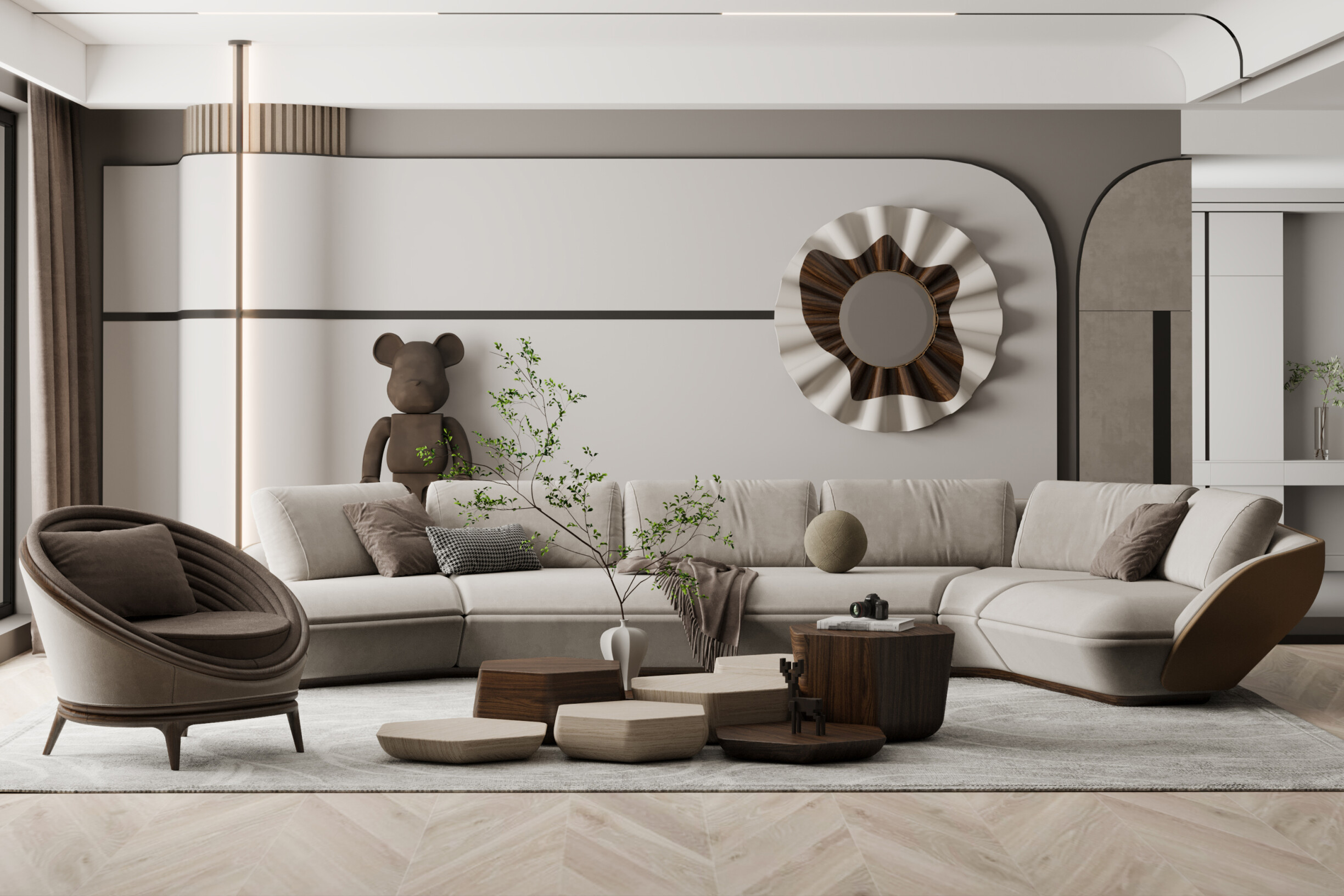
Knowing the different types of wood and their characteristics allows you to understand how their properties will influence their application and the general aesthetics of projects.
Hardwoods are known for their strength and durability and are ideal for high-end furniture and flooring.
Oak has a rich texture and a colour that ranges from golden to brown, making it an excellent choice for furniture, flooring and cladding. It is known for its strength and ease of finishing. Handmade from the finest materials, with a sense of luxury and aesthetics achieved only by our designers, the Harlequin sideboard from ALMA de LUCE is an essential piece of pure elegance and style for your dining room projects.
Walnut, for example, has a rich, deep colour ideal for sophisticated furniture and decorative details, such as the Bonsai dining table from ALMA de LUCE. This wood is valued for its durability and elegant finish.
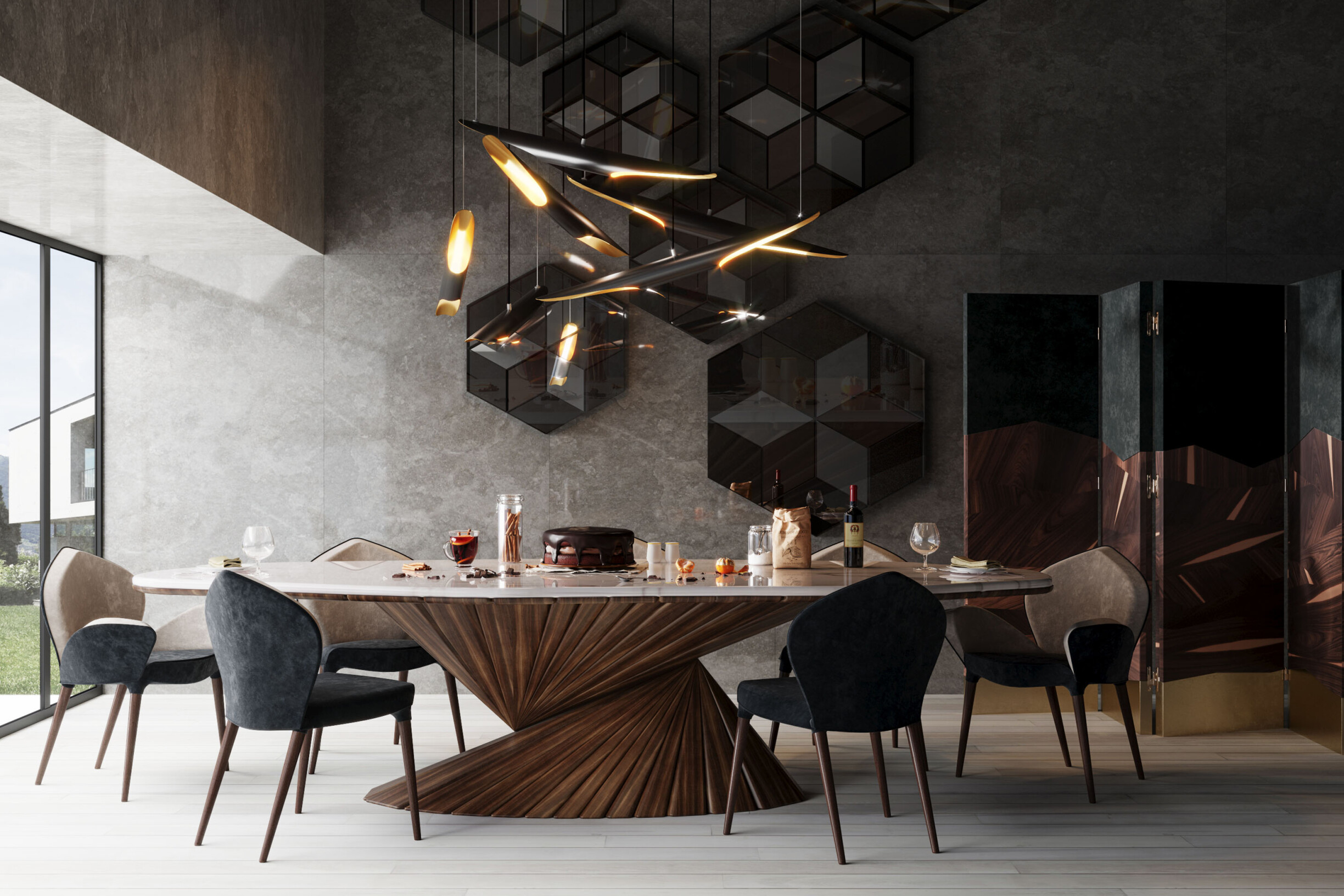
Although softwoods are less durable than hardwoods, they are easier to work with and are often used in interior design projects.
Pine, for example, is versatile, easy to work with, and often used in cladding and interior structures. Its light tone and smooth texture are ideal for rustic and traditional spaces.
Another softwood is cedar, which, with its reddish texture and characteristic aroma, is ideal for interior finishes and furniture requiring moderate humidity resistance.
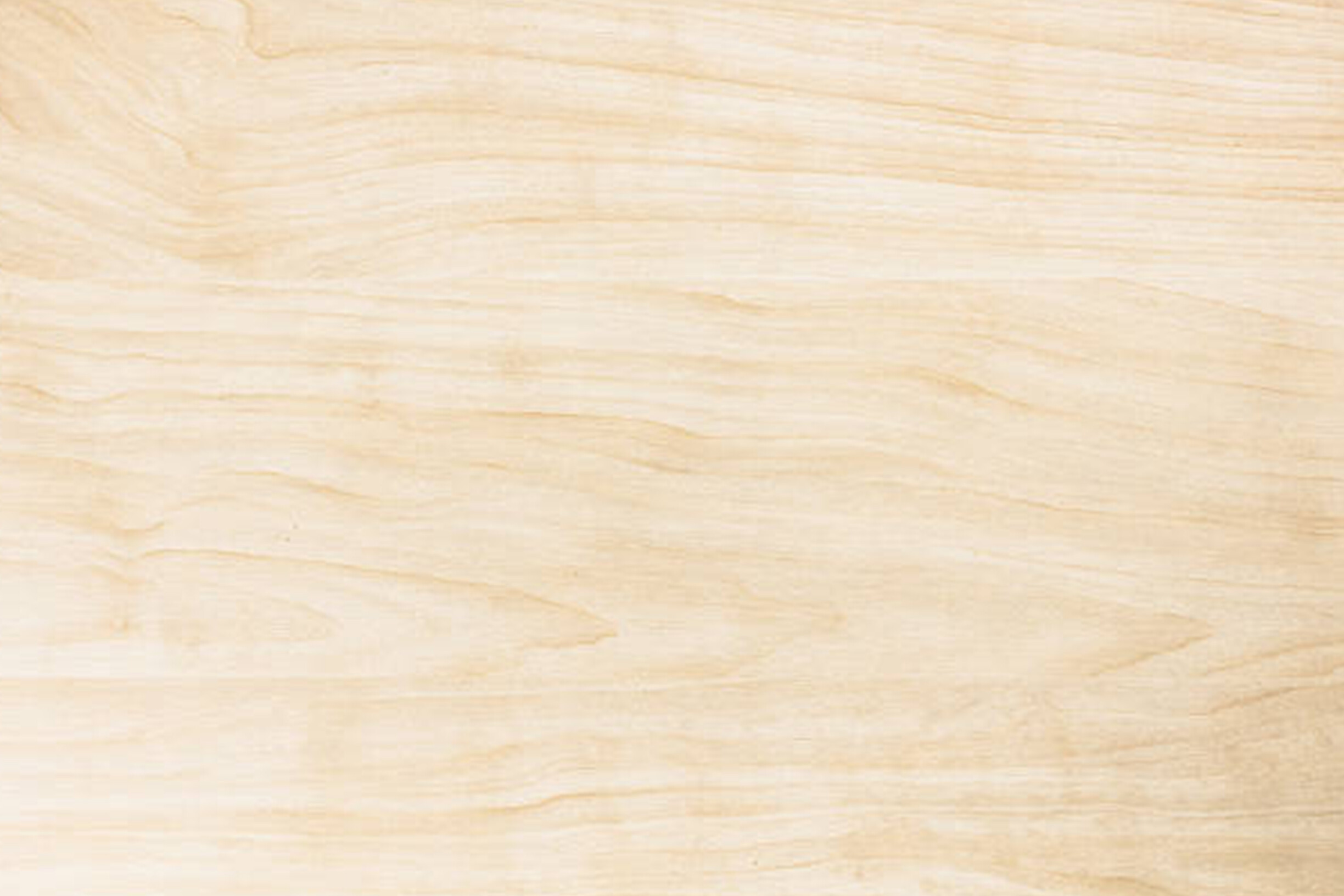
Exotic woods are often chosen for their unique characteristics and distinctive appearance, adding a special touch to any design.
Bamboo is a sustainable and fast-growing plant used in flooring and furniture. It is known for its strength and modern aesthetics. With an almost black colour and impressive density, ebony is ideal for luxurious accents and statement pieces in high-end projects.
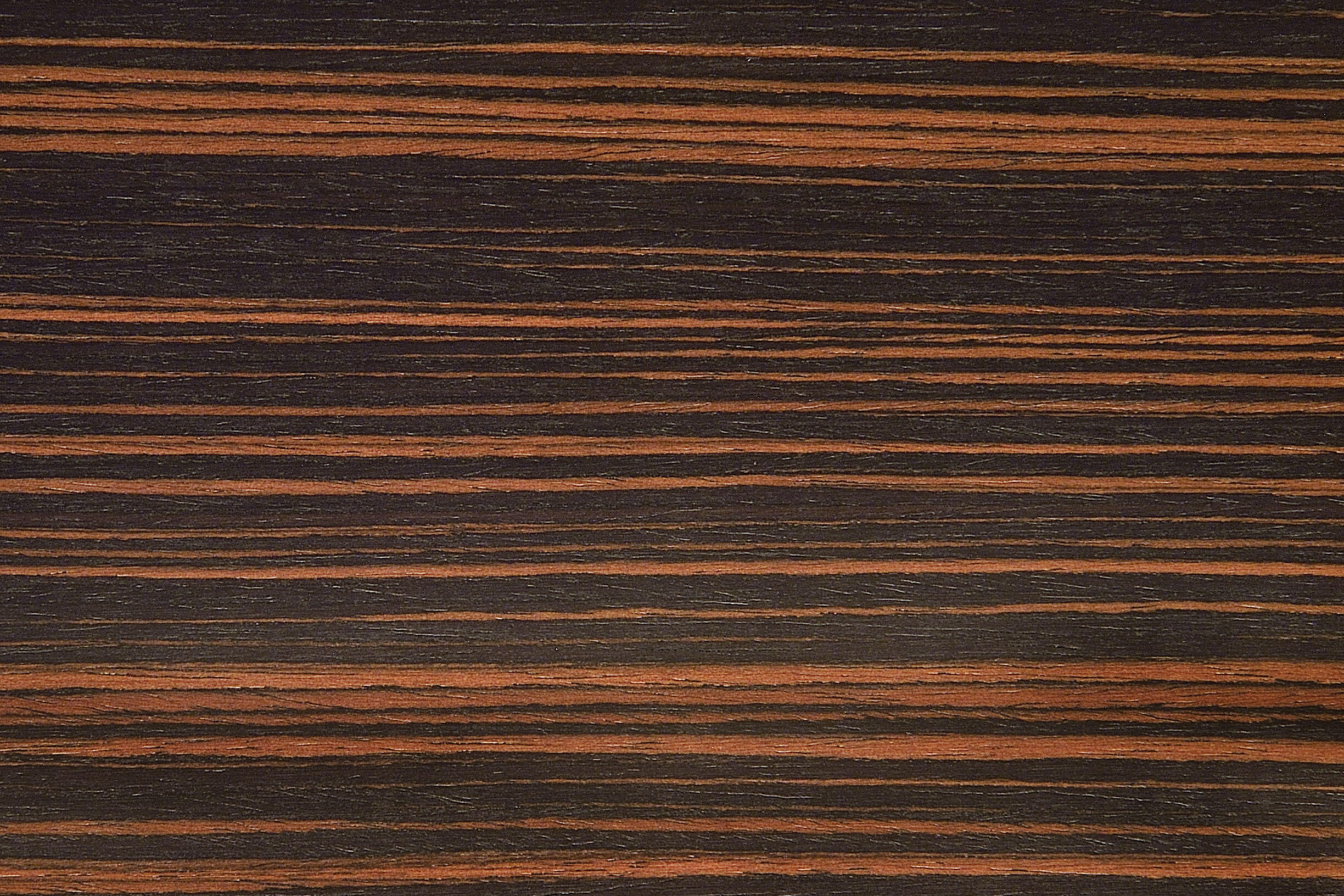
Choosing the right wood can transform a space, starting with furniture. Hardwoods are perfect for pieces that require durability, such as an American walnut bed like the Ginkgo bed from ALMA de LUCE, while soft and exotic woods can be used for decorative details and finishes.
The wood used in coverings and flooring improves aesthetics and contributes to the acoustics and comfort of the area.
Finally, high-quality exotic woods are perfect for architectural details, providing a striking presence.
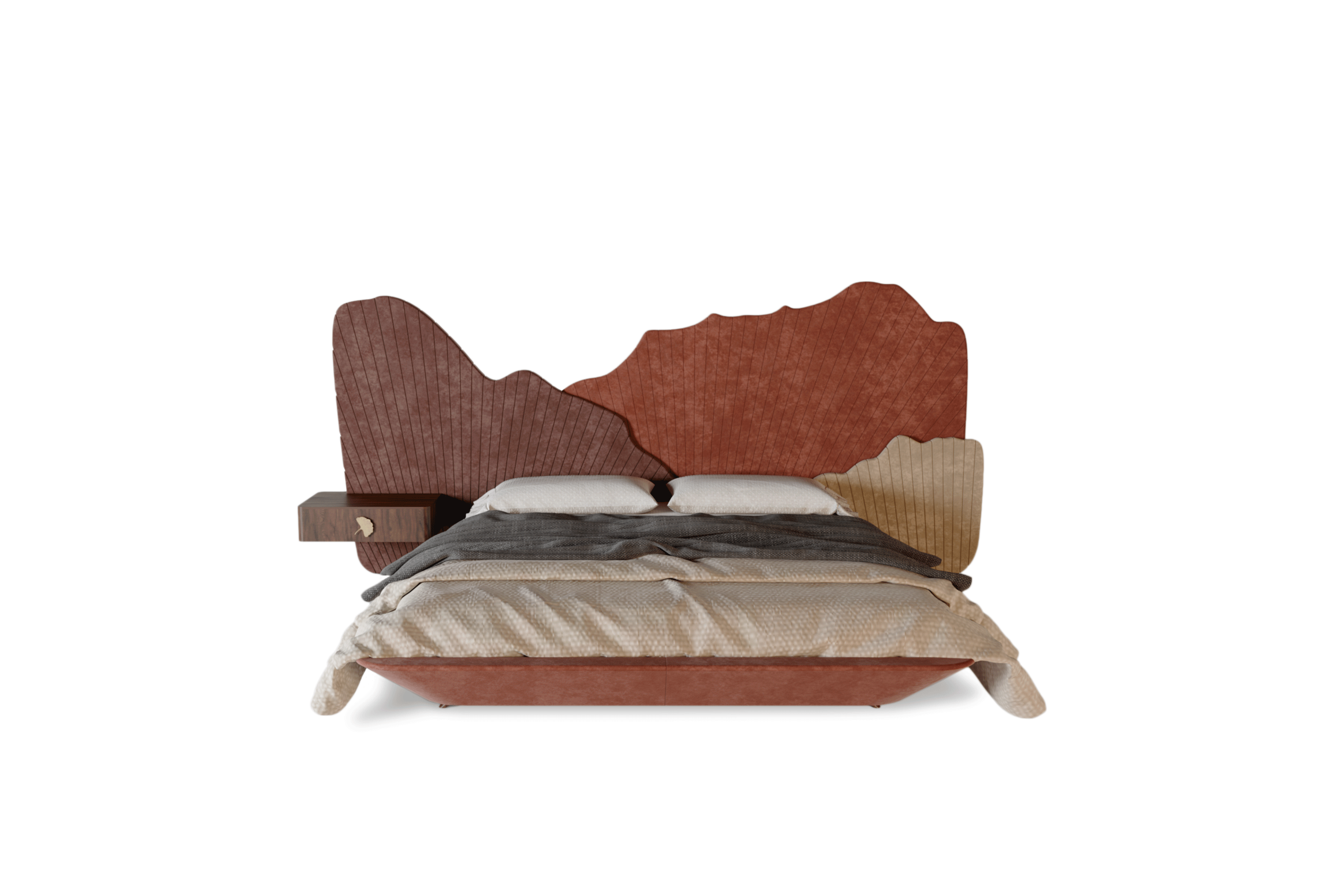
Wood is one of the most sought-after materials for furniture for two reasons: timeless aesthetics and functionality. Wood's use in furniture pieces can define the style and personality of a space and completely change an interior design project.
Wood has been a cherished material in furniture design for centuries. Some pieces of furniture are true icons in interior design, and wood plays a crucial role here.
From classic oak armchairs, such as the Amaterasu from ALMA de LUCE, to modern designer chairs in plywood, wood offers a wide range of options in terms of style and comfort.
Wooden tables, whether for dining or home offices, are essential in any space. The choice of wood, such as walnut for a touch of elegance or pine for a more rustic style, influences the table's character and the space's atmosphere.
Finally, wooden storage furniture, such as cabinets and shelving, is not only functional but also contributes to the space's design.
How wood is worked and finished can transform the look and durability of furniture pieces. Handcrafted woodwork can result in unique and detailed pieces that will make a difference, especially in interior design projects where customization and personalization are key.
Wood can also be treated with a variety of finishes, such as varnish, oil, or wax, to protect and enhance its natural beauty. Of course, each finish offers different levels of protection and appearance, from a high gloss to a more matte finish.
Incorporating wood into your interior design projects will make all the difference to your success. Here are our practical tips for using wood effectively:
1. Choosing the right wood
Hardwoods such as oak for floors and furniture must withstand daily wear and tear in areas with a lot of foot traffic. For example, the Anta da Arca from ALMA de LUCE features a durable wood that maintains its appearance over time. You can opt for softwoods like pine in quieter spaces, such as bedrooms.
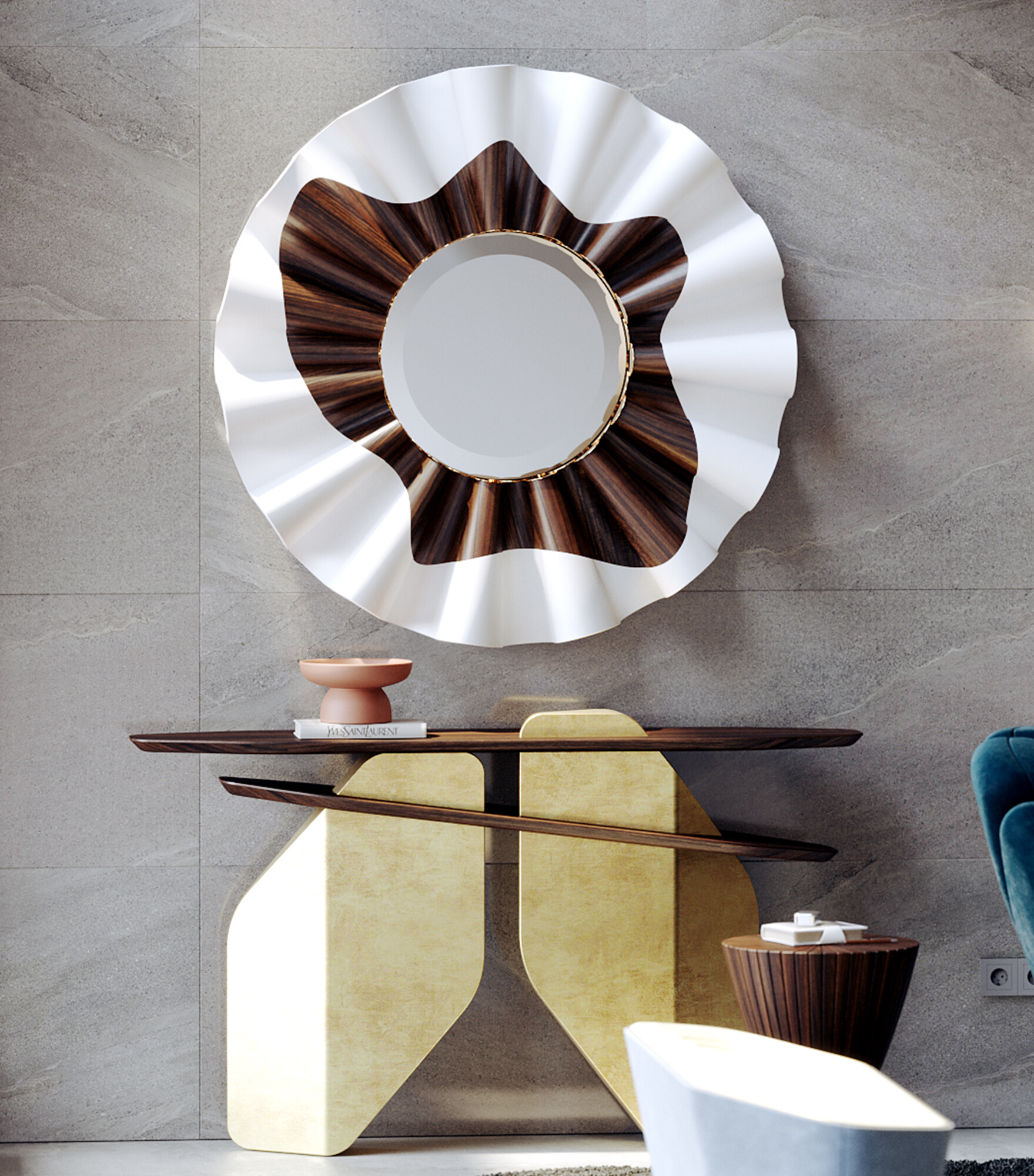
2. Creating effective combinations
Metals and glass are always good options for combining with wood. Pair wooden tables with metal legs for a modern industrial style, or opt for wooden cabinets with metal handles for a sophisticated touch. If glass is your choice, use glass tops on wooden tables for a sleek, light look.

3. Enhance textures and finishes
For an organic and welcoming look, opt for oil or wax finishes that highlight the wood's natural texture. These finishes are ideal for furniture and architectural details that aim to enhance the material's natural beauty.
For a more contemporary style, wood painted in colours that contrast or complement the decor can be a success. For example, white wood furniture works in minimalist rooms and creates an elegant contrast with other elements in the room.

4. Focus on detail and personalization
Carving or inlaying wooden pieces can add a personalized touch. Consider creating custom wooden furniture to optimize space and meet your clients' needs.
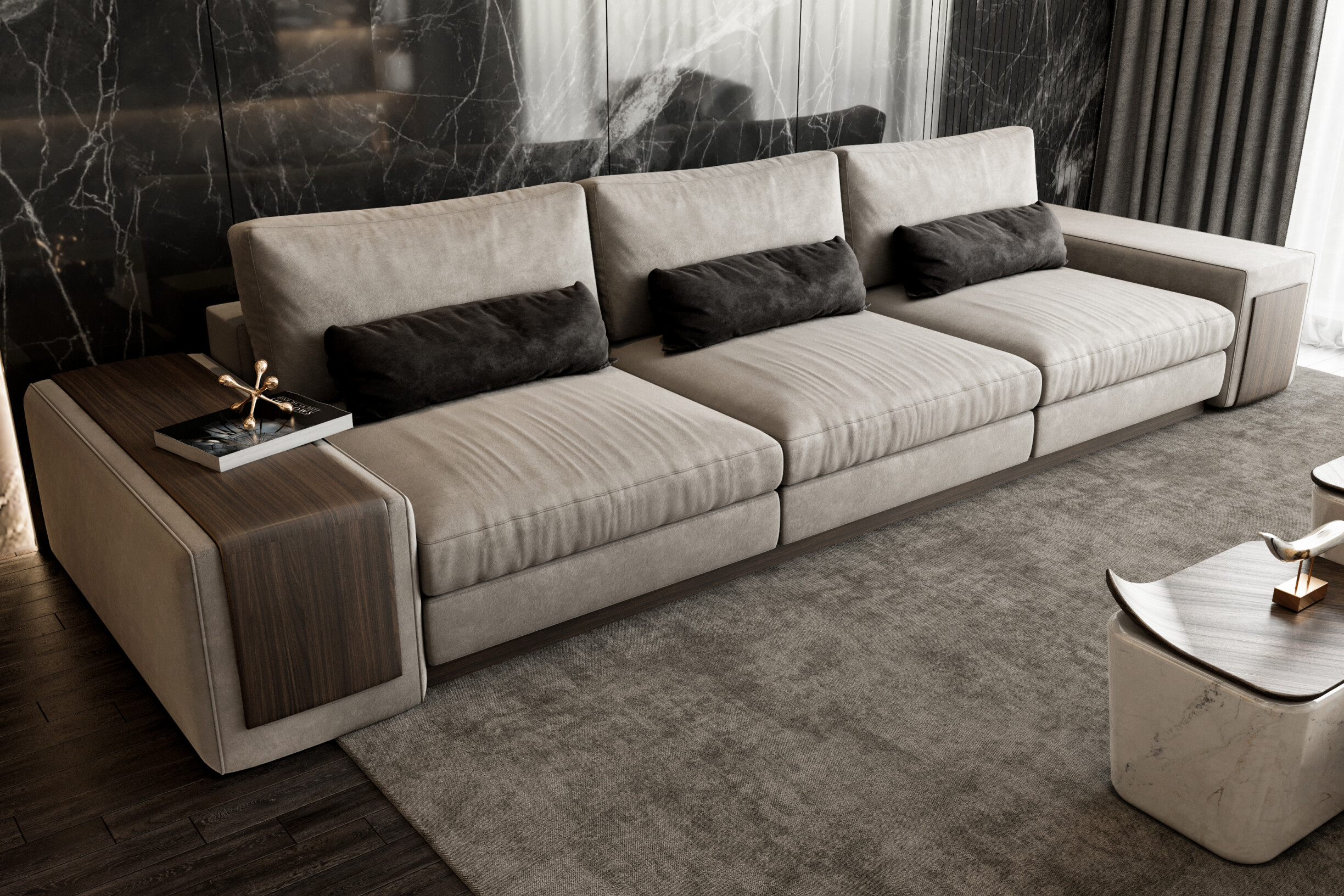
5. Don't forget care and maintenance
The durability and beauty of wood will always depend on its care and maintenance. For regular cleaning, ensure that your client uses specific wood products and soft cloths to maintain the natural shine. A suitable sealant should be applied to protect the wood against moisture, especially in areas such as kitchens or bathrooms.

“Wood is universally beautiful to man. It is the most humanly intimate of all materials.”
Frank Lloyd Wright, American Architect
Much more than just a material, wood is a sensory experience that can transform your projects. Its durability and versatility make it ideal for creating elegant and welcoming spaces. Incorporating wood into your projects adds beauty, a rich history, and a touch of authenticity.
Stay tuned to our blog for more information and curiosities from the world of architecture, interiors, and design!
You can also follow us on Instagram, Facebook, and Pinterest to get inspiration about interior architecture styles, furniture, materials, and finishes!